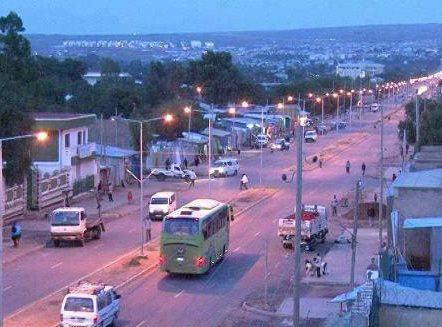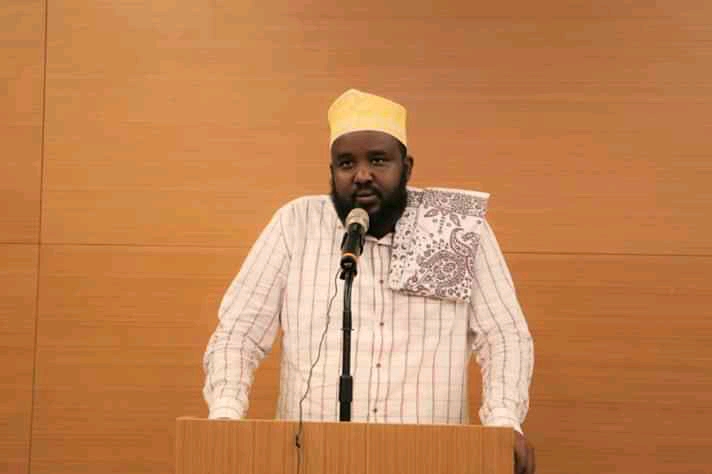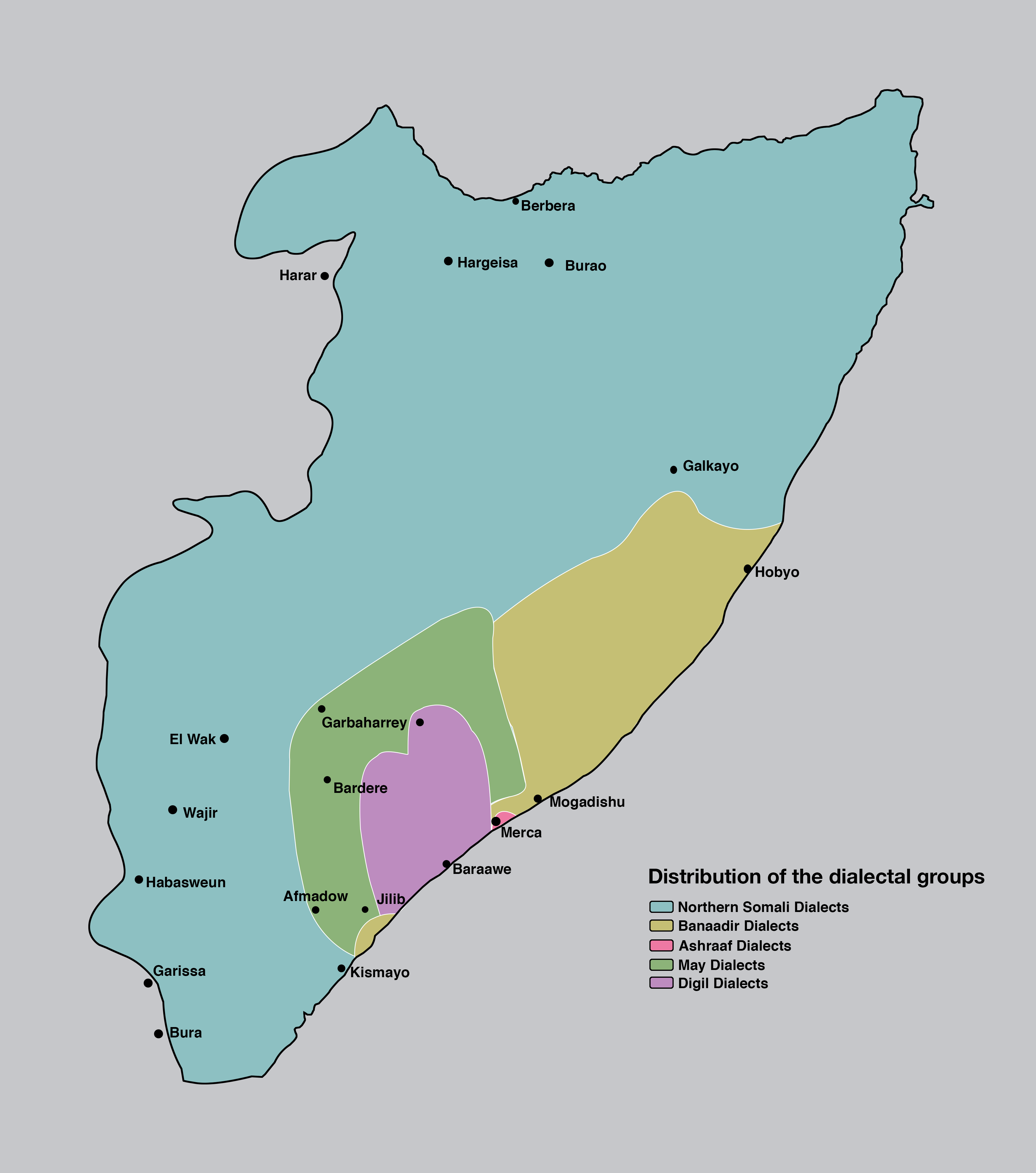|
Jigjiga
Jijiga (, am, ጅጅጋ, ''Jijiga'') is the capital city of Somali Region, Ethiopia. It became the capital of the Somali Region in 1995 after it was moved from Gode. Located in the Fafan Zone with 70 km (37 mi) west of the border with Somalia, the city has an elevation of 1,634 metres above sea level. Jigjiga is traditionally the seat of the Bartire Garad Wiil-Waal of the Jidwaaq Absame. The International airport is named after him. History The region around Jijiga is believed to be associated with the ancient Gidaya state which existed as early as thirteenth century. Jijiga was mentioned by W.C. Barker in 1842 as one of the ''mahalla'' or halting-places of the caravan route between Zeila and Harar. One of the earliest detailed references to Jijiga comes from British hunter Colonel Swayne, who passed through Jijiga in February 1893, which he described as a stockaded fort with a garrison of 25 men next to a group of wells. According to I. M. Lewis, the Dervish in ... [...More Info...] [...Related Items...] OR: [Wikipedia] [Google] [Baidu] |
Dervish Movement (Somali)
The Dervish Movement ( so, Dhaqdhaqaaqa Daraawiish) was a popular movement between 1899 and 1920, which was led by the Salihiyya Sufi Muslim poet and militant leader Mohammed Abdullah Hassan, also known as Sayyid Mohamed, who called for independence from the British and Italian colonies and the defeat of Ethiopian forces. The Dervish movement aimed to remove the British and Italian influence from the region and restore the "Islamic system of government with Islamic education as its foundation", according to Mohamed-Rahis Hasan and Salada Robleh.Hasan, Mohamed-Rashid S., and Salada M. Robleh (2004), "Islamic revival and education in Somalia", Educational Strategies Among Muslims in the Context of Globalization: Some National Case Studies, Volume 3, BRILL Academic, page 147 Hassan established a ruling council called the ''Khususi'' consisting of Islamic clan leaders and elders, added an adviser from the Ottoman Empire named Muhammad Ali and thus created a multi-clan Islamic movemen ... [...More Info...] [...Related Items...] OR: [Wikipedia] [Google] [Baidu] |
Absame
The Darod ( so, Daarood, ar, دارود) is a Somali clan. The forefather of this clan was Sheikh Abdirahman bin Isma'il al-Jabarti, more commonly known as ''Darood''. The clan primarily settles the apex of the Horn of Africa and its peripheries, the Somali hinterlands up to Oromia, and both sides of the Kenya-Somalia border. Perry–Castañeda Library Map Collection - N.B. Various authorities indicate that the Darod is one of the largest Somali clan whereas others suggest that the Hawiye is the largest Somali clan within Somali The Darod clan is the second largest Somali clan family in the Horn of Africa. Origins According to early Islamic books and Somali tradition, Aqeel Abu Talib ibn Abd al-Muttalib Al-Qurashi descendant Abdirahman bin Isma'il al-Jabarti (Darod), a son of the Sufi Sheikh Isma'il al-Jabarti of the Qadiriyyah order, fled his homeland in the Arabian Peninsula after an argument with his uncle.Rima Berns McGown, ''Muslims in the diaspora'', (University of To ... [...More Info...] [...Related Items...] OR: [Wikipedia] [Google] [Baidu] |
Zones Of Ethiopia
The Regions of Ethiopia, regions of Ethiopia are administratively divided into 68 or more zones ( am, ዞን, ''zonə'').CSA 2005 National Statistics The exact number of zones is unclear, as the names and number of zones given in documents by Ethiopia's Central Statistical Agency (Ethiopia), Central Statistical Agency differ between 2005 and 2007.CSA 2007 census Various maps give different zone names and boundaries. Zones are a 2nd level Subdivisions of Ethiopia, subdivision of Ethiopia, below regions and above woredas, or districts. The zones are listed below, by region. Addis Ababa * Addis Ababa#Sub ...[...More Info...] [...Related Items...] OR: [Wikipedia] [Google] [Baidu] |
Somali Region
The Somali Region ( so, Deegaanka Soomaalida, am, ሱማሌ ክልል, Sumalē Kilil, ar, المنطقة الصومالية), also known as Soomaali Galbeed (''Western Somalia'') and officially the Somali Regional State, is a regional state in eastern Ethiopia. Its territory is the largest after Oromia Region. The regional state borders the Ethiopian regions of Afar and Oromia and the chartered city Dire Dawa (Dire Dhawa) to the west, as well as Djibouti to the north, Somaliland to the northeast, Somalia to the south; and Kenya to the southwest. Jijiga is the capital of the Somali Region. The capital was formerly Gode, until Jijiga became the capital in 1995 on account of political considerations. The Somali regional government is composed of the executive branch, led by the President; the legislative branch, which comprises the State Council; and the judicial branch, which is led by the State Supreme Court. Overview The Somali Region formed a large part of the pre-19 ... [...More Info...] [...Related Items...] OR: [Wikipedia] [Google] [Baidu] |
Jidwaaq
The Jidwaq ( so, Jidwaaq, ar, جيدواق) is a large Somali clan, part of one of the largest Somali clans families, the Absame Darod. Overview The Jidwaq clan primarily inhabit the Somali Region of Ethiopia, (where they live in the Jigjiga area), the North Eastern Province of Kenya and the Jubaland region of southern Somalia (where they live south of Bu'ale). The name ''Jidwaaq'' means "the path of God" in the Somali language. According to the UNHCR, the Jidwaq in the Somali region of Ethiopia are mostly agro-pastoralists. They often engage in agriculture but also raise livestock. History The Jidwaaq (Bartire) and the Gerri have been described by ''The Journal of the Royal Geographical Society'' as the western-most branches of the Darod clan. The Bartire subclan in particular has been described as pastoralists in addition to growing coffee, as well as intermarrying with the Emirs of Harar, giving them an amount of influence. Clan tree There is no clear agreement on t ... [...More Info...] [...Related Items...] OR: [Wikipedia] [Google] [Baidu] |
Gidaya
Gidaya ( Harari: ጊዳየ ''Gidayä''), also known as Gedaya or Jidaya was a historical Muslim state located around present-day eastern Ethiopia. The state was positioned on the Harar plateau and a district of Adal region. It neighbored other states in the medieval era including Ifat, Hubat, Hargaya, Mora, Hadiya, and Fatagar. History According to Dr. Lapiso, Gidaya was one of the Islamic states that had developed in the Horn of Africa from the ninth to fourteenth centuries. The earliest mention of Gidaya state is during its conflict with the Makhzumi dynasty in 1266. In the thirteenth century the Arab writer al-Mufaḍḍal mentions the king of Gidaya was named Yûsuf ibn Arsamâyah. In 1285 Walasma dynasty crushed a rebellion led by Gidaya which allied with Shewa to revive the Makhzumi state. In the fourteenth century it was under the Ifat Sultanate and later the Adal Sultanate with its leader known as the Garad. In the sixteenth century the people of Gidaya were part of th ... [...More Info...] [...Related Items...] OR: [Wikipedia] [Google] [Baidu] |
Tekle Hawariat Tekle Mariyam
Tekle Hawariat Tekle Mariyam ( Amharic: ተክለ ሐዋርዓት ተክለ ማሪያም; June 1884 – April 1977) was an Ethiopian politician, an Amhara aristocrat and intellectual of the Japanizer school of thought. He was the primary author of the 16 July 1931 constitution of Ethiopia, which was influenced by the Japanese Meiji Constitution. He was also the first playwright in Ethiopia, and pioneer of Ethiopian and African theater Early life Born in the parish of Seya in Shewa into a clerical Amhara family with connections to the nobility. His father died just before his birth, and his uncle and elder brother became responsible for his upbringing, enrolling the boy in an Orthodox Church school when he was six years old. Within a remarkably three short years, the boy was literate and completed the initial stage of Church education that fitted him to aid in Church services. He went to Addis Ababa to be ordained by the Abun. Tekle Hawariat (nine of age) then move ... [...More Info...] [...Related Items...] OR: [Wikipedia] [Google] [Baidu] |
Richard Pankhurst (academic)
Richard Keir Pethick Pankhurst OBE (3 December 1927 – 16 February 2017) was a British-Ethiopian scholar, founding member of the Institute of Ethiopian Studies, and former professor at the University of Addis Ababa in Ethiopia. His books have been reviewed in scholarly journals, with Edward Ullendorff calling his ''The Ethiopians'' as another testimony to his "remarkable diligence and industry in the service of Ethiopian studies". He is known for his research on economic history and socio-cultural studies on Ethiopia. Early life and education Pankhurst was born in 1927 in Woodford Green to left communist and former suffragette Sylvia Pankhurst and Italian anarchist Silvio Corio. His maternal grandparents were Emmeline and Richard Pankhurst. Pankhurst studied at Bancroft's School in Woodford, then at the London School of Economics, [...More Info...] [...Related Items...] OR: [Wikipedia] [Google] [Baidu] |
Ethiopian Aristocratic And Court Titles
Until the end of the Ethiopian monarchy in 1974, there were two categories of nobility in Ethiopia and Eritrea. The Mesafint ( gez, መሳፍንት , modern , singular መስፍን , modern , "prince"), the hereditary nobility, formed the upper echelon of the ruling class. The Mekwanint ( gez, መኳንንት , modern , singular መኰንን , modern or am, መኮንን , "officer") were the appointed nobles, often of humble birth, who formed the bulk of the aristocracy. Until the 20th century, the most powerful people at court were generally members of the ''Mekwanint'' appointed by the monarch, while regionally, the ''Mesafint'' enjoyed greater influence and power. Emperor Haile Selassie greatly curtailed the power of the ''Mesafint'' to the benefit of the ''Mekwanint'', who by then were essentially coterminous with the Ethiopian government. The ''Mekwanint'' were officials who had been granted specific offices in the Abyssinian government or court. Higher ranks from the titl ... [...More Info...] [...Related Items...] OR: [Wikipedia] [Google] [Baidu] |
Somali Language
Somali (Latin script: ; Wadaad writing, Wadaad: ; Osmanya: 𐒖𐒍 𐒈𐒝𐒑𐒛𐒐𐒘 ) is an Afroasiatic languages, Afroasiatic language belonging to the Cushitic languages, Cushitic branch. It is spoken as a mother tongue by Somalis in Greater Somalia and the Somali diaspora. Somali is an official language in Somalia and Ethiopia, and a national language in Djibouti as well as in northeastern Kenya. The Somali language is written officially with the Somali Latin alphabet, Latin alphabet although the Arabic alphabet and several Somali scripts like Osmanya script, Osmanya, Kaddare script, Kaddare and the Gadabuursi Somali Script, Borama script are informally used.Lewis, I.M. (1958)The Gadabuursi Somali Script ''Bulletin of the School of Oriental and African Studies'', University of London, Vol. 21, pp. 134–156. Classification Somali is classified within the Cushitic branch of the Afroasiatic family, specifically, Lowland East Cushitic languages, Lowland East Cushitic in ... [...More Info...] [...Related Items...] OR: [Wikipedia] [Google] [Baidu] |
Second Italo-Ethiopian War
The Second Italo-Ethiopian War, also referred to as the Second Italo-Abyssinian War, was a war of aggression which was fought between Italy and Ethiopia from October 1935 to February 1937. In Ethiopia it is often referred to simply as the Italian Invasion ( am, ጣልያን ወረራ), and in Italy as the Ethiopian War ( it, Guerra d'Etiopia). It is seen as an example of the expansionist policy that characterized the Axis powers and the ineffectiveness of the League of Nations before the outbreak of the Second World War. On 3 October 1935, two hundred thousand soldiers of the Italian Army commanded by Marshal Emilio De Bono attacked from Eritrea (then an Italian colonial possession) without prior declaration of war. At the same time a minor force under General Rodolfo Graziani attacked from Italian Somalia. On 6 October, Adwa was conquered, a symbolic place for the Italian army because of the defeat at the Battle of Adwa by the Ethiopian army during the First Italo-Ethiopian War ... [...More Info...] [...Related Items...] OR: [Wikipedia] [Google] [Baidu] |
Harar
Harar ( amh, ሐረር; Harari: ሀረር; om, Adare Biyyo; so, Herer; ar, هرر) known historically by the indigenous as Gey (Harari: ጌይ ''Gēy'', ) is a walled city in eastern Ethiopia. It is also known in Arabic as the City of Saints ( ar, مدينة الأَوْلِيَاء). Harar is the capital city of the Harari Region. The ancient city is located on a hilltop in the eastern part of the country and is about five hundred kilometers from the Ethiopian capital Addis Ababa at an elevation of . For centuries, Harar has been a major commercial center, linked by the trade routes with the rest of Ethiopia, the entire Horn of Africa, the Arabian Peninsula, Asia, and through its ports, the outside world. Harar Jugol, the old walled city, was listed as a World Heritage Site in 2006 by UNESCO in recognition of its cultural heritage. Because of Harar's long history of involvement during times of trade in the Arabian Peninsula, the Government of Ethiopia has made it a crimina ... [...More Info...] [...Related Items...] OR: [Wikipedia] [Google] [Baidu] |








